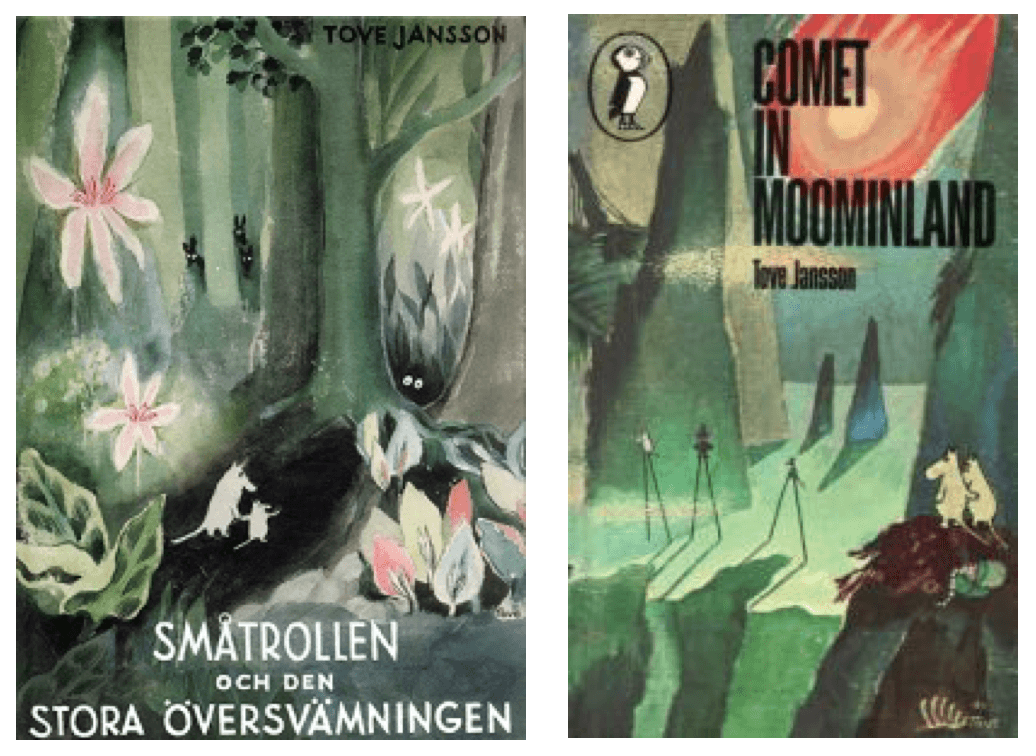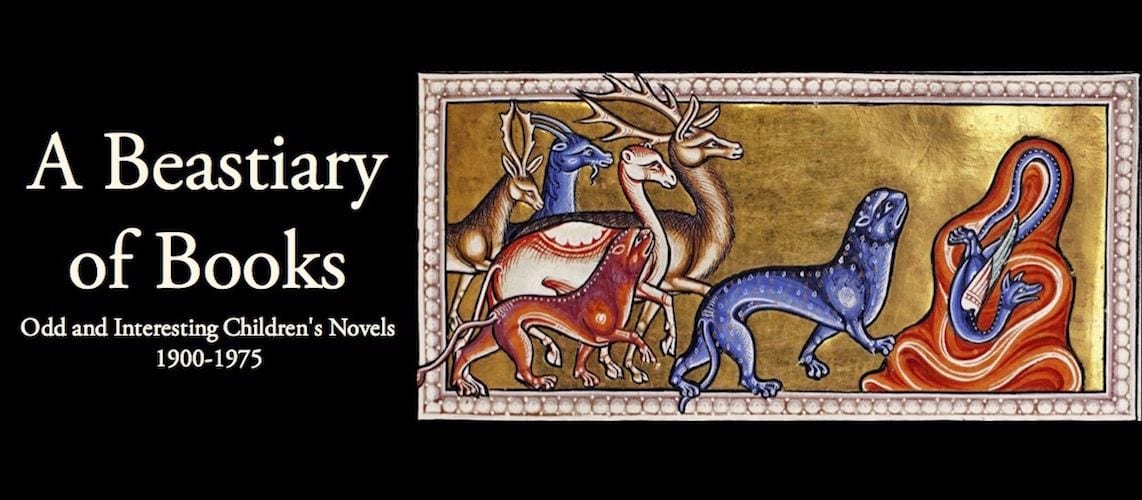 What a lovely, sun-drenched, quirky book this is. The Moomins and their extended family (including Sniff, Snufkin, two Snorks, a Hemulin, and a Muskrat) spend an enchanted spring and summer having adventures, complicated by a magician’s hat that changes things into other things.
What a lovely, sun-drenched, quirky book this is. The Moomins and their extended family (including Sniff, Snufkin, two Snorks, a Hemulin, and a Muskrat) spend an enchanted spring and summer having adventures, complicated by a magician’s hat that changes things into other things.
No description of those adventures could do them justice. I will just tell you that the hat changes river water into raspberry juice, and quote you my favorite line: “They’re walloping the King of California, and he deserves it!” (It’s actually poor Moomintroll, changed so that his friends don’t recognize him.) The story ends when the hat’s owner arrives and grants wishes to all, during a glorious night-time garden party that lights up Moomin Valley and brings summer to a close.
 Though this was the first to be translated into English, it was the third Moomin book. The very first, The Little Trolls and the Great Flood, was not available in English until 2005, so for half a century the Anglophone moomin canon began with the second book, Comet in Moominland. After Finn Family Moomintroll came five more, interspersed with picture books and a comic strip. None of these other works ever quite achieve the wonderous joyfulness of Finn Family Moomintroll. The first two are full of delights but also shadows; they feel as if Jansson was getting WWII out of her system. The later books either try too hard to be fun (The Exploits of Moominpappa, Moominsummer Madness), or plunge into existential despair. Moominpapa at Sea is a portrait of a selfish patriarch gone off the rails; Moominvalley in November, written just after Jansson’s own mother’s death, is a heart-breaking meditation on missing Moominmama.
Though this was the first to be translated into English, it was the third Moomin book. The very first, The Little Trolls and the Great Flood, was not available in English until 2005, so for half a century the Anglophone moomin canon began with the second book, Comet in Moominland. After Finn Family Moomintroll came five more, interspersed with picture books and a comic strip. None of these other works ever quite achieve the wonderous joyfulness of Finn Family Moomintroll. The first two are full of delights but also shadows; they feel as if Jansson was getting WWII out of her system. The later books either try too hard to be fun (The Exploits of Moominpappa, Moominsummer Madness), or plunge into existential despair. Moominpapa at Sea is a portrait of a selfish patriarch gone off the rails; Moominvalley in November, written just after Jansson’s own mother’s death, is a heart-breaking meditation on missing Moominmama.
Tove Jansson lived in a Swedish-speaking enclave in Finland and wrote in Swedish. She and Astrid Lindgren both began publishing in 1945, with the end of WWII. (Both had begun their works while the war was still on, Jansson in 1939, Lindgren in ~1943.) Surely they must have read each others’ works, so it’s surprising how little borrowing there is between the two.
. . . Except, perhaps, for this small gem: in Comet in Moominland (1946), Moomintroll dives in the ocean for pearls, and Sniff finds a cave in the cliffside above the ocean, only accessible by a precarious path, where they decide to keep the pearls. In Pippi in the South Seas (1948), the children of Kirrikirridut Island have a cave in the cliffside above the ocean, only accessible by a precarious path, where they keep their pearls. (I live for this kind of thing.)
Some of the Moomin books stray across the border into Nonsense. The Moomins and the Great Flood was Jansson’s first effort at tale-telling, and she set her first two moomins in motion without apparently much of a plan. They wander about seeking Moominpapa, are caught up in a flood, and in the end are fortuitously reunited with him, and the house he built, in its new location where it was swept by the flood. Several of the later books return to the paripatetic, random quality of the first book. Characters roam from place to place, meeting odd creatures and then leaving them behind. Oddness seems to be the point. This may have been where Jansson’s real strengths lay; she was, after all, also a cartoonist, writing brief episodes about moomins to entertain for a moment.

As a kid, I read mostly horse or dog stories, but the Moomins came my way and I loved them. The serendipitous nature of the plot set my palate to enjoy more mature works of fantasy later in life.
عکس پروفایل زیبا برای تصاویر فانتزی و تصویر زمینه نوشته
http://meomeo.ir/